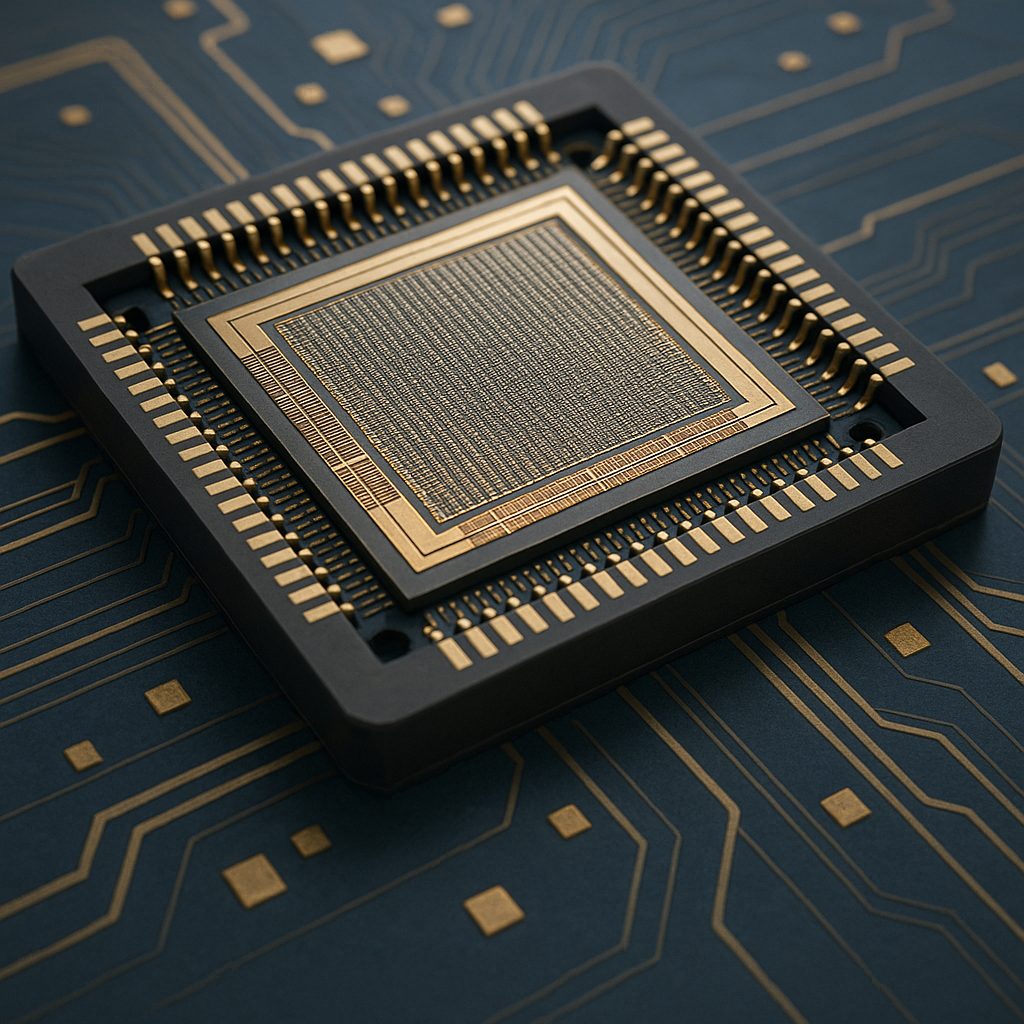Contents
On October 13, 2025, a research team led by Dr. Sun Zhong from the Institute for Artificial Intelligence, Peking University, China, in collaboration with the School of Integrated Circuits, published a groundbreaking paper in Nature Electronics titled “Precise and scalable analogue matrix equation solving using resistive random-access memory chips.” The paper announced the creation of the new Chinese chip — a high-precision, scalable analog matrix computing chip based on resistive random-access memory (RRAM).
This achievement marks a significant milestone for China’s semiconductor research. For the first time, analog computation has reached a precision comparable to digital computing, while delivering up to hundreds or even thousands of times higher computational efficiency and energy performance than today’s leading GPUs.
I. A Leap in Chip Architecture: The new Chinese chip
For decades, analog computation has been seen as inherently limited in precision. Although analog circuits can use physical quantities such as current and resistance to perform calculations directly, their accuracy has been constrained by noise, drift, and interference.
Now, the birth of the new Chinese chip changes this paradigm.
The Peking University team has successfully overcome the precision barrier through the synergistic integration of new materials, novel circuits, and advanced algorithms.
Their new RRAM-based crossbar architecture can directly solve matrix equations through electrical operations, achieving 24-bit fixed-point precision — an accuracy once thought impossible for analog systems.
As one expert described vividly, “It’s as if electric current can now perform mathematics by itself — calculating in an instant, as fast as light.”
This represents a true “lane-changing overtaking” moment for China’s chip technology: bypassing traditional digital bottlenecks to open an entirely new computational route.
II. Chinese Chip: From Classical Analog to AI-Era Innovation
Analog computing is not new; it predates the digital revolution.
But as computing demands grew, digital systems dominated due to their precision and stability.
Today, in the age of artificial intelligence and large-scale models, the world faces a new challenge:
digital computing has reached its power and efficiency limits. Training and running massive AI models require enormous clusters of GPUs, consuming staggering amounts of energy.
In this context, China’s new chip embodies a renaissance of analog computing — now reborn through new materials, new architectures, and algorithmic innovation.
Unlike digital processors that perform sequential logic operations, this analog chip executes matrix computations directly in hardware, using physical current flow to represent and process data.
A task that might require hundreds of GPUs in a traditional setup could be handled by a single analog chip, with far less power consumption.
This is not an incremental improvement, but rather a paradigm shift — one where computation happens “naturally” in the fabric of physics itself.
III. Thousandfold Performance, Radical Power Savings
In the modern computing race, the key factor is not just power, but power efficiency — the ratio of energy consumed to computational output.
The Peking University study shows that the new Chinese chip can deliver hundreds to thousands of times higher throughput compared to leading digital processors in certain matrix-solving and signal-processing tasks, while reducing power consumption to a few percent of conventional systems.
In AI training, telecommunications, and large-scale scientific simulations, such energy-efficient analog computation could transform how the world builds and operates compute infrastructure.
As Dr. Sun Zhong stated, “Our goal is not merely to push the limits of computing power — but to redefine its efficiency.”
IV. Challenges Toward Industrialization
Despite its promise, this achievement is still at the frontier of scientific research.
To move from lab prototype to industrial application, several key engineering challenges remain:
-
Device consistency and manufacturing yield: RRAM devices must maintain uniform performance and reliability at scale.
-
Noise and thermal stability: Precision must be maintained as circuit arrays expand.
-
Software–hardware integration: Current AI frameworks are designed for digital architectures; a new programming ecosystem will be needed.
-
Reliability and lifetime: Long-term drift, signal degradation, and device endurance must be verified.
Nevertheless, this research positions China as a pioneer in post-Moore computing paradigms, where innovation comes not from smaller transistors but from entirely new architectures.
V. Strategic Significance: A New Anchor in the Global Compute Race
In the global race for computing power, the decisive edge lies in efficiency, scalability, and autonomy.
Whichever nation achieves higher energy efficiency with equal or greater precision will shape the next era of AI and supercomputing.
This Chinese innovation demonstrates the nation’s growing ability to innovate not only in application-level AI, but in fundamental computing architectures — the deepest layer of the technological stack.
By drastically improving both computational efficiency and energy consumption, this new Chinese chip represents a strategic breakthrough for China’s quest toward computing sovereignty and energy-conscious AI development.
VI. A Glimpse Into the Future: When Electricity Thinks
From analog physics to artificial intelligence, from resistive memory to precision matrix solving — This invention is more than just a chip; it’s a new way of thinking about computation itself.
As digital and analog paradigms converge, and as algorithms intertwine with materials and circuits, the world may soon enter an era where electricity not only transmits power, but performs intelligence. The birth of the Chinese new chip may be remembered as the spark that redefined the relationship between matter, energy, and thought —where, in a flash of current, mathematics happens at the speed of nature.



